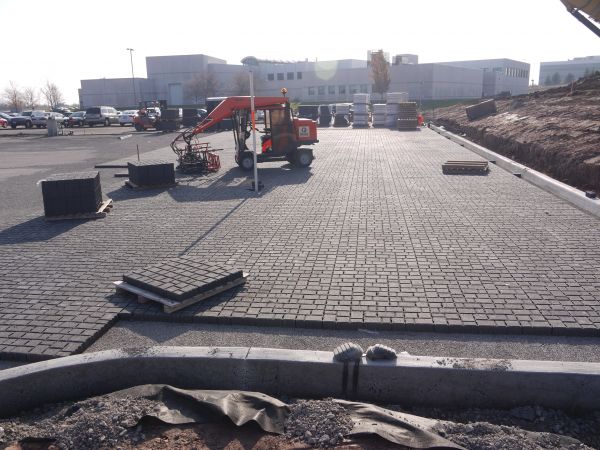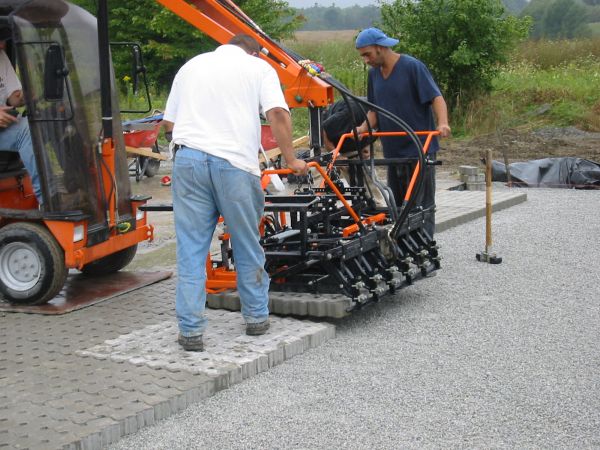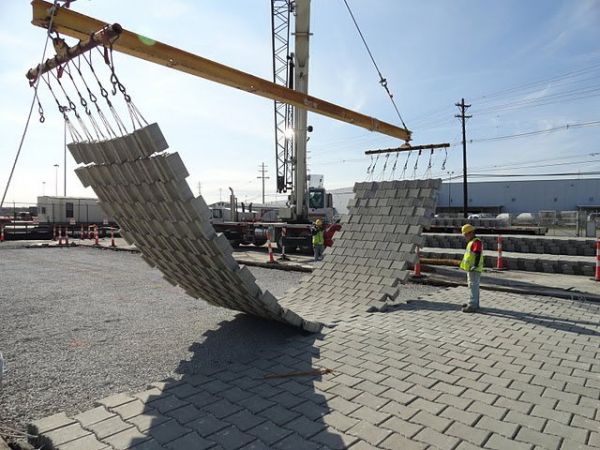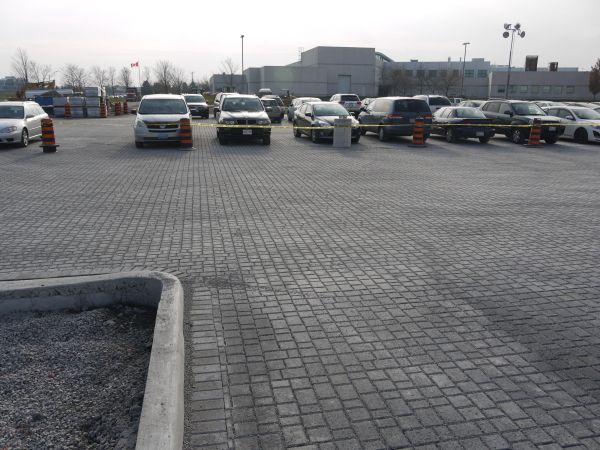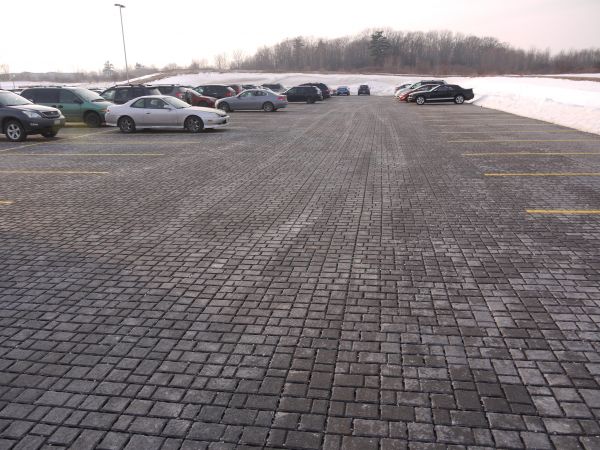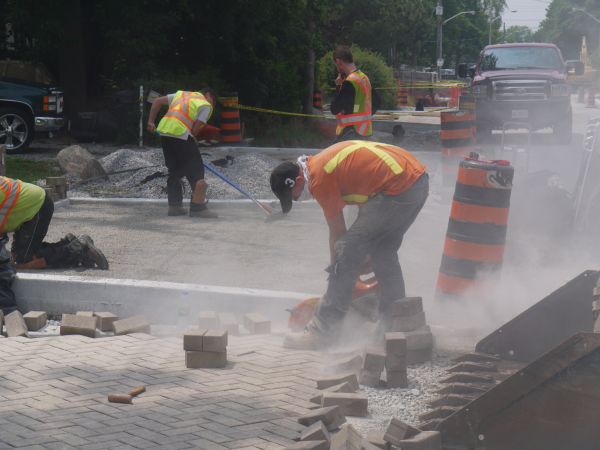Difference between revisions of "Paver installation"
Jump to navigation
Jump to search
JamesCowan (talk | contribs) |
|||
| Line 23: | Line 23: | ||
<gallery mode="packed" widths=300px heights=300px> | <gallery mode="packed" widths=300px heights=300px> | ||
Paver-placement-vehicle.JPG | Installing entire pallets of pavers is possible with specialized equipment. (Photo Source: CVC, | Paver-placement-vehicle.JPG | Installing entire pallets of pavers is possible with specialized equipment. (Photo Source: CVC, 2012) | ||
Paver-placement-vehicle-2.JPG | The equipment shown can install single pallets of pavers all at once. (Photo Source: TRCA, date unknown) | Paver-placement-vehicle-2.JPG | The equipment shown can install single pallets of pavers all at once. (Photo Source: TRCA, date unknown) | ||
Paver-placement-crane.JPG | Joined permeable pavers being installed with a crane. (Photo Source: TRCA, date unknown) | Paver-placement-crane.JPG | Joined permeable pavers being installed with a crane. (Photo Source: TRCA, date unknown) | ||
Paver-placement-cut.JPG | Pavers cut to the shape of the adjacent curb at IMAX Headquarters in Mississauga. (Photo Source: CVC, | Paver-placement-cut.JPG | Pavers cut to the shape of the adjacent curb at IMAX Headquarters in Mississauga. (Photo Source: CVC, 2013) | ||
IMAX-Paved.JPG | Finished parking lot at IMAX Headquarters in Mississauga. (Photo Source: CVC, | IMAX-Paved.JPG | Finished parking lot at IMAX Headquarters in Mississauga. (Photo Source: CVC, 2013) | ||
Paver-cutting-incorrect.JPG | Cutting pavers within the infiltration area is not advised as the fines/dust could clog the permeable surface. (Photo Source: CVC, | Paver-cutting-incorrect.JPG | Cutting pavers within the infiltration area is not advised as the fines/dust could clog the permeable surface. (Photo Source: CVC, 2014) | ||
</gallery> | </gallery> | ||
[[Category:Gallery]] | [[Category:Gallery]] | ||
Revision as of 14:46, 22 September 2022
Permeable pavers have the highest load tolerance of the permeable pavement variations. It is especially important that the permeable pavers be installed correctly on the bedding material. See Permeable pavements: Specifications for more information.
Construction Steps:
- Lay permeable pavers by hand or install whole pallets of pavers at a time with specialized equipment.
- Cut pavers to fit into the edges of the infiltration area.
- Fill voids between pavers with joint aggregate.
- Sweep excess joint aggregate from pavement surface.
- Compact completed surfaces with a plate vibrator at the end of each day or when all pavers are placed. The plate vibrator can be applied up to 1.8 m from the laying face (incomplete edge).
Key Inspection Points:
- Cracked/broken pavers are discarded and replaced with intact pavers prior to filling void spaces.
- Sizes of pavers and joint width conform to applicable municipal standards.
- Pavers conform to the specifications of the design.
- Minimum setback of 1.8 m from the laying face is considered when compacting at the end of each workday.
- Cut pavers are installed to edges of the practice before compaction of completed sections takes place.
- Pavers are elevated within 3 mm to 10 mm above adjacent inlets or channels.
- Paver pattern and joint widths conform to the directions of the manufacturer.
- Permeable pavers are compacted at least twice with a plate compactor.
Mistakes to Avoid:
- Leaving pavers uncompacted – finished surfaces must be compacted at the end of each workday.
- Cutting blocks in infiltration area – edge pavers should be cut with a wet saw in a designated area away from the infiltration area to avoid clogging with fines and dust.
